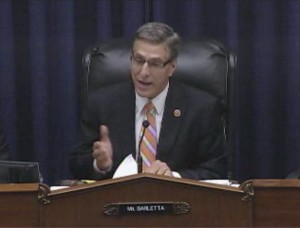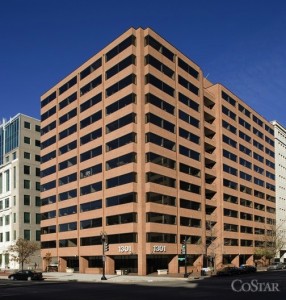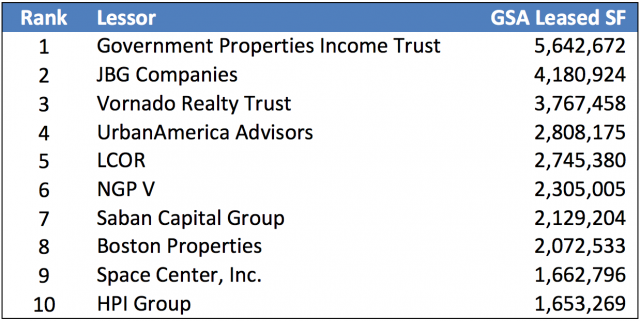A year ago when I wrote my review of the year 2012, I forecasted that in 2013 “we can be sure that our federal government will continue to clamp down on real estate spending and there will be intense pressure to reduce the inventory through greater space utilization and disposal of unneeded property”. Unfortunately, that was entirely accurate. Additionally, the year was marked by increasingly acute budget distress.
2013 was a lot like 2012, though perhaps worse. There were heated partisan showdowns over the budget, the debt ceiling and almost every policy proposal, all culminating in the October Shutdown. The general atmosphere of rancor and uncertainty was enough to force most agencies into triage mode, and the leasing market suffered for it.
Yet, the Ryan-Murray budget agreement at the end of the year produced a glimmer of optimism. Though the Bipartisan Budget Act is a very small deal relative to the fiscal challenges ahead, it may produce enough confidence for agencies to begin planning strategically and hopefully result in bolder, long-term leases.
January: Meet the new Congress. Same as the old Congress.
 The two-year term of the 112th Congress came to a close on January 3, 2013. It was widely regarding in the media as “the least productive ever”, largely due to partisan bickering and the lowest output of new legislation in modern history. Yet, the newly elected 113th Congress looked much the same. The Republicans still controlled the House and the Democrats still controlled the Senate. The leadership of key committees changed but the agenda did not and it was clear at the outset that congressional mandates would remain the same: decrease the size of the inventory, improve space utilization and reduce costs. Frankly, these issues have bipartisan support and we don’t expect them to change as long as the federal budget remains in distress. Further, Congress recognizes that it has significant authority to force downsizing and it is wielding that power aggressively.
The two-year term of the 112th Congress came to a close on January 3, 2013. It was widely regarding in the media as “the least productive ever”, largely due to partisan bickering and the lowest output of new legislation in modern history. Yet, the newly elected 113th Congress looked much the same. The Republicans still controlled the House and the Democrats still controlled the Senate. The leadership of key committees changed but the agenda did not and it was clear at the outset that congressional mandates would remain the same: decrease the size of the inventory, improve space utilization and reduce costs. Frankly, these issues have bipartisan support and we don’t expect them to change as long as the federal budget remains in distress. Further, Congress recognizes that it has significant authority to force downsizing and it is wielding that power aggressively.
February: We Experience the Gummy Bite of the Sequester.
In the short run, the Sequester ended up being a Y2K type of event. Yet, in the long run, the indiscriminate cuts began to wear on agencies and policymakers. If there was any benefit to the Sequester it was that its universal distaste set in motion the wheels of the budget compromise that would be reached at the end of the year.
March: The Footprint is Officially Frozen.
In response to the budget reality outlined above, the Office of Management and Budget (OMB), issued a management procedures memorandum directing all Executive Branch departments and agencies to implement a “Freeze the Footprint” policy for federal real estate. In a nutshell, the policy limits all federal agencies (with very few exceptions) to maintain their inventory of leased and owned space at or below the level established in FY 2012. That doesn’t mean that agencies can’t expand specific locations, but if they do so they must relinquish space elsewhere such that their total inventory does not increase.
Efforts to limit or downsize the federal inventory had previously been introduced by the President and by Congress, but this OMB policy memorandum formalized the process and provided specific reporting requirements that will allow for progress to be tracked. It also established a baseline, making it clear that 2012 will be regarded as the inventory peak–at least for a while.
April: Will BRAC be Back?
President Obama proposed a $2.4 billion line item in his FY 2014 budget to fund two new rounds of the Base Realignment and Closure (BRAC) process, in 2015 and 2017. Yet Congress quickly rejected this request. Anytime we hear discussion of another BRAC round we listen closely. The last BRAC round, implemented in 2005 and completed last year*, devastated the Northern Virginia office market, causing more than 100 tenancies to relocate, primarily to military bases or to other newly constructed facilities. The transformative power of BRAC is that it provides massive funding for construction. For DoD, BRAC is a welcome and expedient funding method for new facilities compared to the normal MILCON process.
Fortunately for lessors, BRAC was roundly rebuffed in Congress and the FY’14 Defense appropriations bill specifically prohibits DoD from implementing another BRAC round. In our view, BRAC will return once the global security imperative overwhelms political NIMBY-ism. Though, in the current budget environment the lump-sum expense of BRAC is easy to defer.
May: The New Congress Issues Its First Airing of the Grievances

It took until May for the House Transportation and Infrastructure, Subcommittee on Economic Development, Public Buildings and Emergency Preparedness to organize its first hearing relating to public buildings. The title of the hearing, “Saving Taxpayer Dollars: Freezing the Federal Real Estate Footprint” was a clear message that Congress would continue to push aggressively for reductions in real estate costs.
June: Tangherlini Officially Takes the Reins
Dan Tangherlini was officially confirmed as Administrator of the General Services Administration on June 27th. He had already been appointed in that role when the prior Administrator, Martha Johnson, resigned in the wake of the Las Vegas Conference Scandal**. Tangherlini’s first job was to satisfy Congress and the public that order and accountability had been restored at GSA. Yet his primary mission has been to shrink the federal footprint and one way he is doing it is to promote redesign of the workplace to accommodate more mobile work.
July: We Recognize the Largest GSA Property Owners
With all of the doom and gloom through the first half of the year, we felt it was worth observing that investors are still keenly interested in federal-leased properties and that cap rates have been drifting downward since the recession. We profiled the largest owners of GSA-leased properties in the United States noting that, though there are more than 5,000 distinct owners of GSA-leased properties in the United States, ten of them own properties that house 15% of the entire GSA lease inventory.
August: Property Sales Underscore the Value of Federal Credit

On August 22nd, 1301 New York Avenue, a class B office building in downtown Washington, DC, sold for $135 million ($671/RSF)–a low 5% cap rate. This building sold at cap rate and per-square-foot pricing that rivals class A product because it is fully leased to GSA for 15-years of firm term The sale was a testament to the power of U.S. Government credit. It was also indicative of the relative scarcity of those leases in the federal inventory. With more capital chasing federal credit in a market with declining average lease terms, we’ve noticed a pricing bifurcation benefitting those increasingly rare properties with more than 10 years of remaining firm term.
September: GSA’s Budget Under Fire
Symptomatic of the rift between the Legislative and Executive branches, the House Appropriations Committee issued an FY’14 appropriations bill featuring deep cuts to GSA’s construction, renovations and R&M budget. Frankly, these costs were already under severe fiscal pressure. In fact, a report by GAO in 2012 estimated that, at that time, GSA had accrued a $4.6 billion repair and maintenance backlog in its owned inventory. Continued budget cuts to GSA’s owned inventory has put the Federal Buildings Fund on a path to insolvency and, at the same time, increased demand for leased space.
October: Shutdown!
On October 1st, unable to reach a budget agreement of any type (including a Continuing Resolution) the federal government shut down for the first time since 1995. Most GSA personnel were ordered to stay home and the business of federal leasing came to a complete halt.

November: Lessons Learned from the Shutdown
The Shutdown lasted 16 days. With rare exception, the event did little to impact the federal leasing market but it did create raise some curious “what ifs”. Among them, what if the federal government were to remain shutdown for an extended period? Would GSA pay its rent? The answer, unfortunately, is that GSA requires congressional approval to spend money from the Federal Buildings Fund. Even though the Fund is flush with cash, GSA would be unable to make rent payments in the event of a prolonged shutdown.
Yet, investors still like the federal credit. Despite all of the budgetary distress, the sales trend demonstrates that investors seek the relative safety of GSA-leased property. Cap rates–especially for long-term leased properties–have been steadily declining.
December: Budget Deal Provides Optimism
Rep. Paul Ryan and Sen. Patty Murray collaborated to produce the Bipartisan Budget Act (BBA). Though the BBA is merely a joint resolution, it provides a roadmap for appropriations bills. Those appropriations, which are expected in a couple weeks, will be the first across the board appropriations since 2009. The occasion may be enough to provide agencies with the budgeting runway–and confidence–to plan more strategically for their long-term space needs.
The BBA is a very small agreement in comparison to the much larger Grand Bargain required to address the basic structural defects in the federal budget. Yet we are optimistic that it signals a waning of partisan deadlock.
We also are optimistic that 2014 will provide recovery in commercial markets nationally and, if the federal budget situation does stabilize, we can hope for (relative) improvement in the federal leasing markets this year.
* By law, BRAC was to be completed by the end of September 2011, but many leases were extended beyond that date–some deep into 2013–to accommodate the transition of personnel and equipment that would occur even after the new BRAC-funded facilities were completed.
** GSA’s Las Vegas Conference was an easy target for ridicule, but no one did it better than Jon Stewart on The Daily Show. If you have a couple spare minutes, treat yourself to this.

